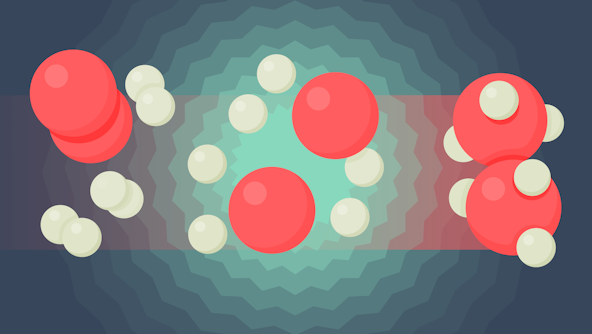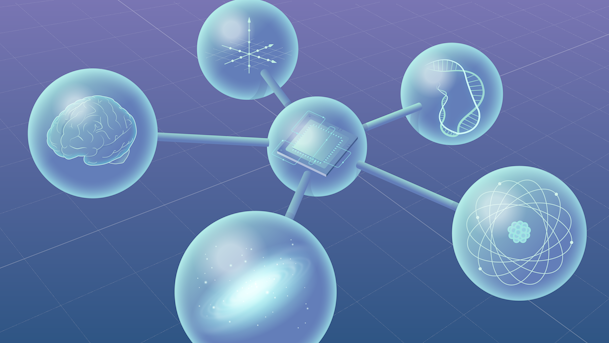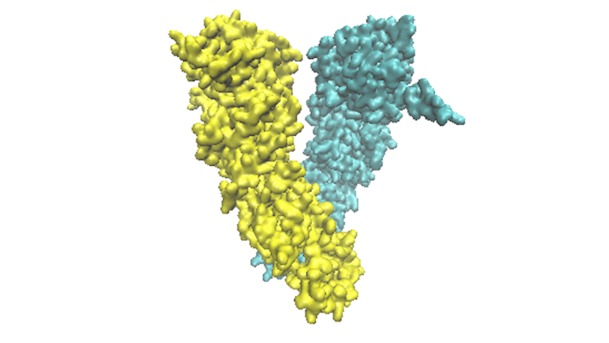The mission of the Flatiron Institute is to advance scientific research through computational methods, including data analysis, theory, modeling and simulation.
Read MoreFeatured News

Flatiron Institute researchers have identified a previously unknown way to make the universe’s heaviest atoms, such as gold, platinum and uranium. They calculate that a single flare from a supermagnetized star called a magnetar can produce the mass equivalent of 27 moons’ worth of these elements in one go.
Our Centers
Center for Computational Biology
Center for Computational Mathematics
Center for Computational Neuroscience
Center for Computational Quantum Physics
Scientific Computing Core
It develops, deploys and maintains computational infrastructure — from supercomputers to desktop PCs — dedicated solely to the use of Flatiron researchers.
Initiatives

The Simons Foundation Initiative for Computational Catalysis is a new effort within the Flatiron Institute dedicated to the development and application of computational techniques enabling the rational design of more efficient and more affordable catalysts.

Our goal is to accelerate the development of versatile foundation models tailored for numerical datasets and scientific machine learning tasks. The challenge we are undertaking is to build AI models which leverage information from heterogeneous datasets and across different scientific fields, which, contrary to domains like natural language processing, do not share a unifying representation.
Collaborative Work

Machine learning has become an indispensable tool for computational science, and it is an active and growing area of research throughout the Flatiron Institute.
- CCM
- CCN
- CCA
- CCB
- CCQ

Underlying all biological processes are molecules and their interactions with each other. However, our ability to understand how these molecules function over biologically relevant scales remains very limited.
- CCB
- CCM

This collaboration, directed by Greg Bryan of Columbia University, aims to understand and determine the evolution and initial conditions of our universe, using observations via a Bayesian forward modeling approach.
- CCA
- | Columbia University
- | Lawrence Berkeley National Lab
- | Harvard University
- | Stockholm University
- | Institute D'Astrophysique de Paris
- | Université de Montreal
- | Princeton University
- | Carnegie Mellon University
- | Max-Planck Institute for Astrophysics
Flatiron Institute Idea Scholar Program
For distinguished scientists interested in developing scientific talent in the workforce and enabling pathways to science
Scholars may engage in a variety of activities, such as working on scientific projects, starting new collaborations, mentoring junior scientists, and organizing or participating in workshops and career development events.
Software
A major effort of the Flatiron Institute is the development and support of high-quality, open-source software for research.
Research Highlights
Chirped amplitude mode in photo-excited superconductors
Using a state-of-the-art numerical scheme, we show that the Higgs mode under excitation exhibits chirped oscillations and exponential decay when…
Physical Review BResponses of neurons in macaque V4 to object and texture images
Humans and monkeys can rapidly recognize objects in everyday scenes. While it is known that this ability relies on neural…
bioRxiv:2024.02.20.581273Optimized Linear Measurements for Inverse Problems using Diffusion-Based Image Generation
We examine the problem of selecting a small set of linear measurements for reconstructing high-dimensional signals. Well-established methods for optimizing…
arXiv:2405.17456News & Announcements
April 29, 2025

March 31, 2025

March 21, 2025









